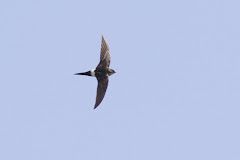


Photos: Wryneck (by Peter Ransome); Sociable Lapwing (from Kazakhstan); Lapland Bunting (from guess where).
I have just returned from my annual pilgrimage to the Isles of Scilly, where the bird watching is unrivalled at this time of year. Vagrants from east and west seem to congregate on the 'magical isles' in October and it was evident this year with the star birds being a SOCIABLE LAPWING from Kazakhstan and GREY-CHEEKED THRUSH from the US being seen at the same time. There is nowhere else in the world where such an occurence could happen.
It was far from a 'classic' Scilly week, compared with the legendary years of 1985, 1987 and 1999 that brought enigmatic birds such as Yellow-bellied Sapsucker, Yellow-billed Cuckoo, Philadelphia Vireo and Common Nighthawk but, nevertheless, Scilly offered unrivalled birding all week. There was always an opportunity to see Lapland Bunting, Red-eyed Vireo, Yellow-browed Warbler or Wryneck and this year the weather was like summer for most of the week. Watching a Snow Bunting on Peninnis wearing just a t-shirt was quite surreal - normally it's freezing and with a biting wind when one gets to grips with this Arctic breeder.
The usual crack squad of Andrew Harriss, John Harris, Peter Ransome and Tim Hemmings accompanied me all week and find of the week must go to Tim who found the Red-backed Shrike on Tresco. Whilst not a mega-rarity, this Shrike is still a much sought-after bird and, having disappeared as a regular British breeding bird, it is always pleasing to see one on Scilly. Hot on the heels of Andrew's Pallas's Warbler last year, Tim's find made sure we kept up our contribution to the week's birding highlights.
We all felt that there was a possible increase in the numbers of birders on Scilly this year - a good sign. Over the last 10 years the numbers seem to have dropped dramatically from around 1,200 to around 250 with most big "listers" choosing to stay on the mainland in case the autumn's hot rarity turns up on the mainland or on the northern isles of Shetland or Orkney. This is obviously good and bad - good because you can walk around without being in a crowd and bad because there are fewer pairs of eyes to find the rare birds. Also evident this year was the number of women birders. I have to say that usually (and I can't think why...) the population of birders on Scilly in October is about 98 per cent men (ok, possibly 97 per cent). But this year there were women everywhere, and not just accompanying birding spouses but groups of women, too..! I won't speculate as to the reason (because I have no idea) but, nevertheless, it's a very welcome development.
It wasn't just birds that entertained us all week - there were numerous sightings of Common Dolphins around the islands and we also managed to catch up with the St Martin's Ant (a very rare species of red ant found only on St Martin's and, bizarrely, Surrey) and Smooth Stick Insects (imported with rare plants brought in to the Tresco Abbey Gardens from far-flung locations).
All in all a top trip, as usual and we are already booked up for Scilly 2009... top!






